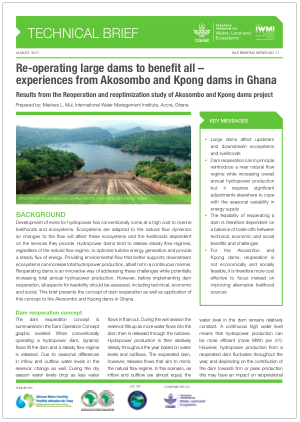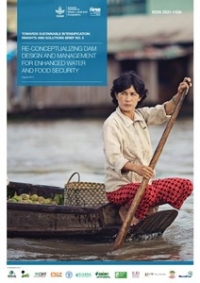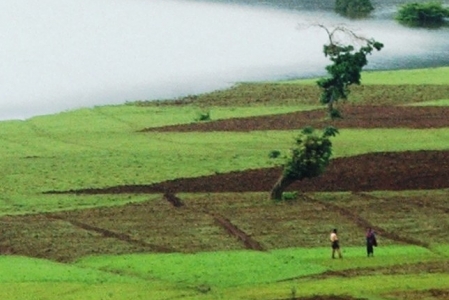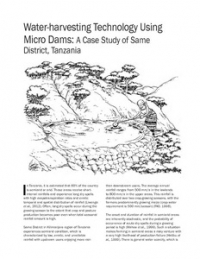Will restoring or attempting to recreate the 'natural' flows of rivers downstream of large dams for the benefit of ecosystems actually help or hinder local communities? Dams such as Akosombo (built in the 1960s) and Kpong (built in the 1980s) in Ghana have existed for so long that communities living downstream have had time to adjust their livelihood strategies to the new flow regime. Changing the flows from these dams back to their natural state may impact these communities’ livelihoods to a similar extent as when the dam was first constructed.
So should the flow regime downstream of these dams actually be changed to near-natural conditions? Who or what will benefit and who or what will lose out? Maybe on balance it's better to leave it how it is? These are some of questions that a team of researchers and I sought to answer in our book, which recently launched.
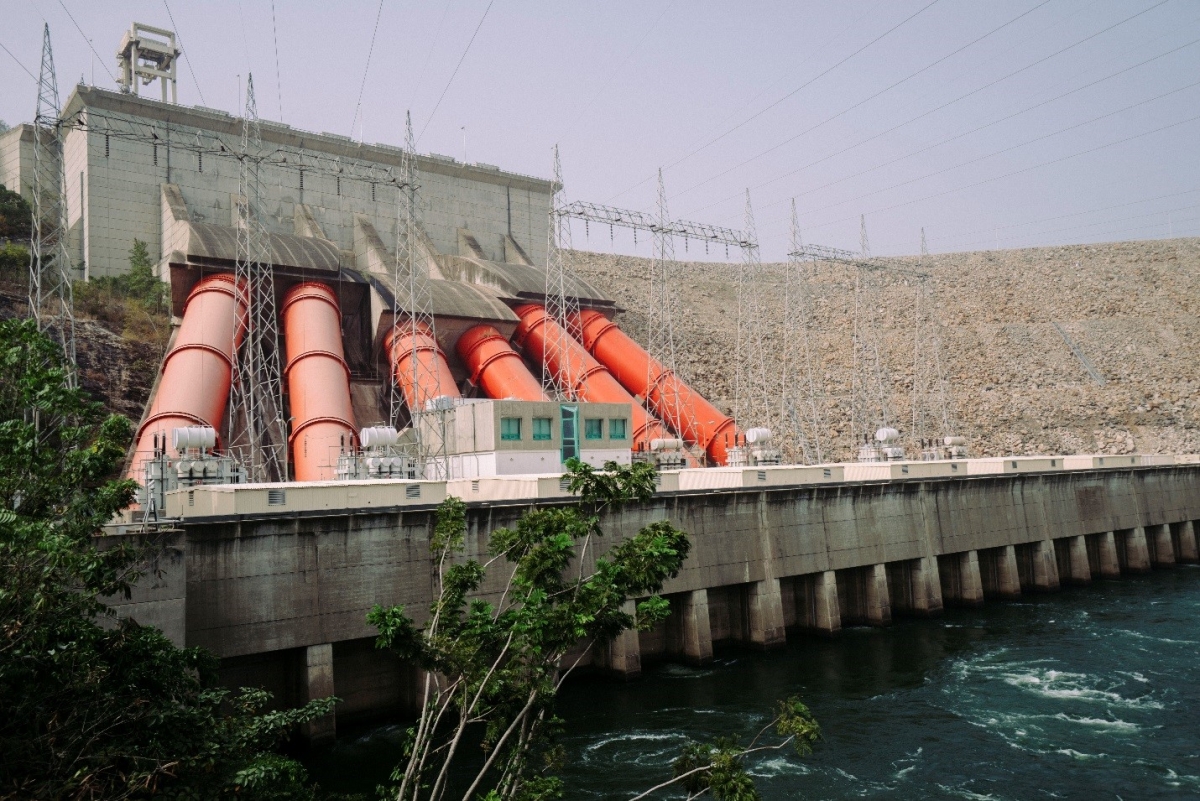
Past and current challenges
Critics of large-scale dam development have for a long time pointed to the negative impacts that these have on local communities. As people are moved to make way for the reservoir, and the flow of water downstream from the dam changes, the natural and agricultural production systems (of fish and other foods) that these communities relied on can be disrupted.
With the aim of countering these historical impacts there are now proposals to modify how these dams are operated for hydropower production, changing the way (frequency, quantity and length of time) that water is released through the turbines, otherwise known as 'reoperating' them. The key objective is to restore some of the downstream ecosystems and ecosystem services. The belief is that this will improve downstream livelihoods by restoring some of the livelihood production systems that existed before the dam was built. But what about the livelihood systems that have developed since then, and that are dependent on current flow regimes?
These are some of the questions that we addressed through a research project led by Water Resources Commission (WRC), Ghana, implemented by the International Water Management Institute (IWMI) and funded by the African Water Facility of the African Development Bank. The research also contributed to the CGIAR Research Program on Water, Land and Ecosystems.
We found that, before construction of the dams, the majority of the downstream community members were involved in flood recession farming and fishing. Flood recession farming was practiced on up to 50,000ha of the Lower Volta floodplains, which were seasonally inundated, often at regular intervals, leaving behind nutrients and moisture in the soil. The improved soil fertility usually results in high crop yields. Another important income generating activity, particularly for women, was clam production during the dry season, which took place up to 95km upstream from the river mouth. It generated an estimated total annual income (present value) of over 2 million US dollars. This requires brackish water flows (a mix of salty, often sea, water and fresh water). After the dams were constructed, and downstream flows regulated, all of these livelihood options were badly impacted and affected communities had to find alternatives, creek fishing was completely stopped, reducing fish catch by more than 50%.
Currently, many livelihood activities are affected by proliferation of aquatic weeds and low water quality affecting the health and livelihoods of riparian communities. For example, there is a high incidence of bilharzia affecting roughly one third of the population (a disease caused by parasitic flatworms that can fester in freshwater), agricultural production of smallholders is falling and fish catches are dwindling. Some point the finger of responsibility for these impacts on the dams and existing flow regimes.
Exploring the options through research
To assess the feasibility of reoperation, we developed four scenarios. These involved a combination of the water flow requirements for different sectors, including fisheries, agriculture and health. These scenarios (see example below) show the water level, or rate of flow of the river, as a function of time, while showing seasonal changes. The four scenarios ranged from a stable flow regime, close to the current regime, to a more changeable one that mimics the average “natural” flow regime. The costs and benefits of each scenario was then assessed. Unfortunately, the economic analysis showed that none of the scenarios will benefit all parties, so any of the options will involve a trade-off.
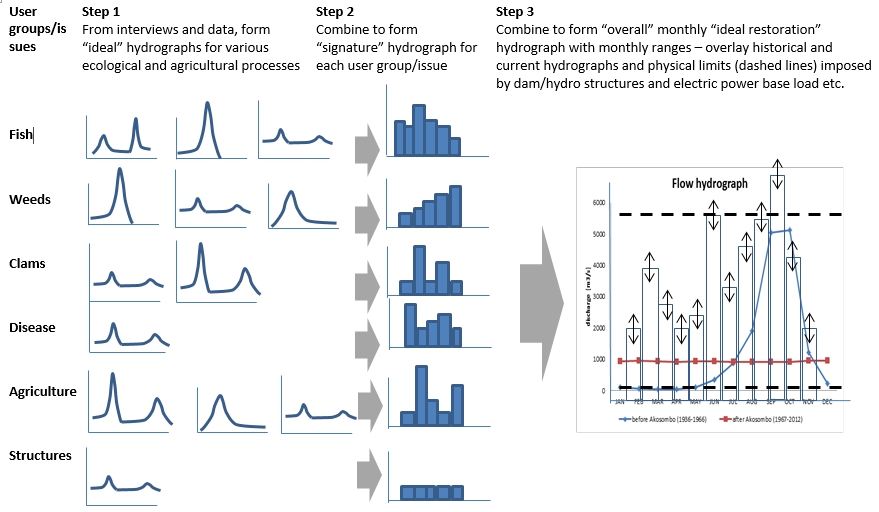
Hydropower production or restoration of ecosystems?
At the same time, we found that changing the flow regime to release more natural flows downstream of Akosombo would have a severe impact on hydropower production, reducing it by 75% for the most natural scenario. Compensating for the reduction in hydropower would require substantial investment in both transmission and electricity production capacities. Economically speaking the benefits accrued from doing this are relatively minor compared to the losses in hydropower production. Additionally, our research shows that reoperating the dams without affecting the hydropower production significantly will result in almost no ecosystem benefits.
Community views and priorities
Local communities hold the view that they were better off before the dam was constructed. When engaged as part of the research process, these views were reflected in their flow restoration scenario preferences. However, evidence from flood events caused by a dam spill in 2010 show that almost all downstream livelihoods were negatively impacted, along with losses of livestock, property and human lives.
During community consultation, for example at the Grand Durbar, a formal ceremony with traditional leaders in attendance, in March 2016, we learned that communities were most interested in addressing the issues of weeds and health rather than the actual reoperation. Prevention of water borne diseases, such as schistosomiasis and malaria, are also high on the communities’ agenda.
Water hyacinth, an invasive aquatic weed species, is a major problem in both the Kpong and Akosombo dam systems. Although construction of the dams was not the main reason these plants are now there, the current flow regimes are very conducive for the weed to spread. However, reoperation of Akosombo dam for example is also not expected to improve the aquatic weed situation much since saltwater intrusion, which helps to naturally kill the plants, is blocked, by a downstream sandbar located at the estuary.
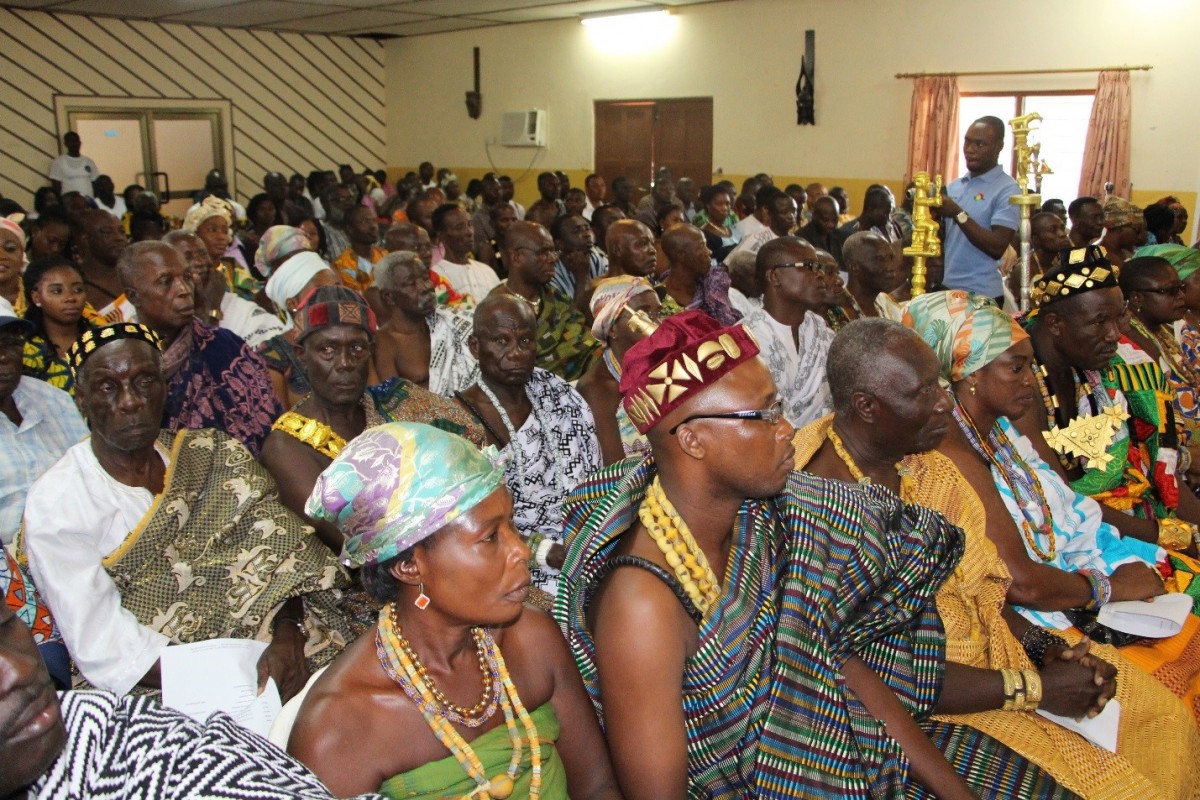
To reoperate or not to reoperate - fixing old problems or creating new ones?
The call to reoperate existing dams shows that there is a new paradigm in dam development, where community livelihoods need to be considered in the development, management and operation of them. Any decisions on reoperating these dams require a holistic approach that fully evaluates the benefits and costs of reoperation.
Balancing the needs for power with the potential benefits to ecosystems and livelihoods of reoperating dams like Akosombo and Kpong is a challenge. Power generation in Ghana, and for other countries in the region, is highly dependent on the Akosombo dam. So reoperation is less feasible when national and regional power grids receive a large portion of their electricity from it.
Ideally, instead of reoperating existing dams, riparian communities should be part of the pre-dam planning process to ensure that their needs are considered from the outset and that they receive benefits from these developments to offset any potential losses. The younger the dam, the easier it is to incorporate these considerations and benefits in the operations. Lessons learnt from this study could, for example, help to positively inform the operations of Bui dam on the Black Volta which came into operation in 2013, and also the pre-dam planning and design of the Pwalugu multi-purpose dam in Ghana.
Dams, development and downstream communities: implications for reoperation Akosombo and Kpong dams in Ghana, a book detailing the findings of this four year research project has now been published and will soon be freely available for download on the Water Resource Commission Website.
Other partners involved in the project included; the Natural Heritage Institute (NHI), USA, Institute for Environmental & Sanitation Studies (IESS), University of Ghana, Centre for African Wetlands (CAW), and the Council for Scientific and Industrial Research (CSIR) – Water Research Institute (WRI), Ghana, the Volta Basin Development Foundation and the Volta River Authority.
A short Technical Brief on the project and its key findings can also be viewed here.




